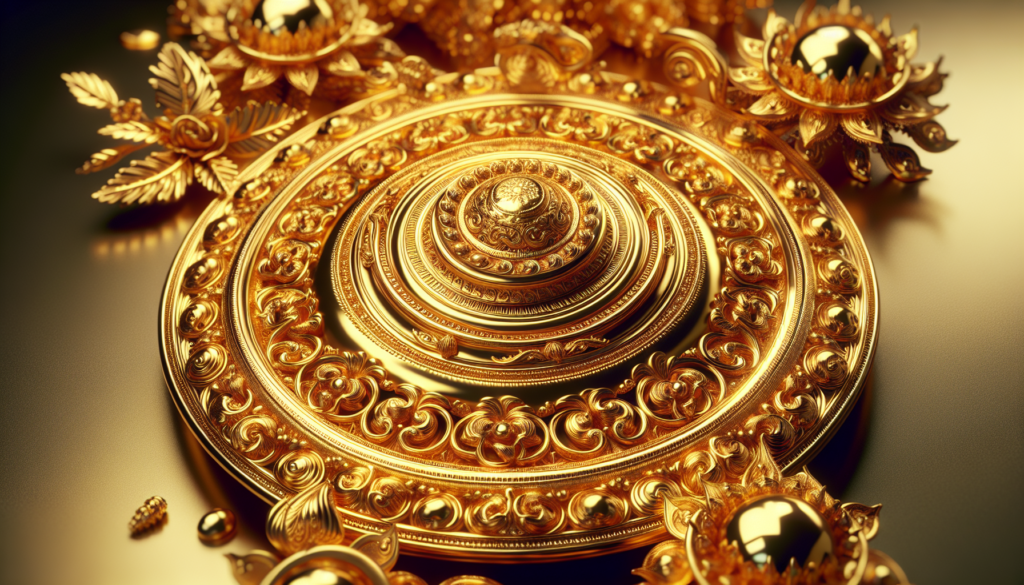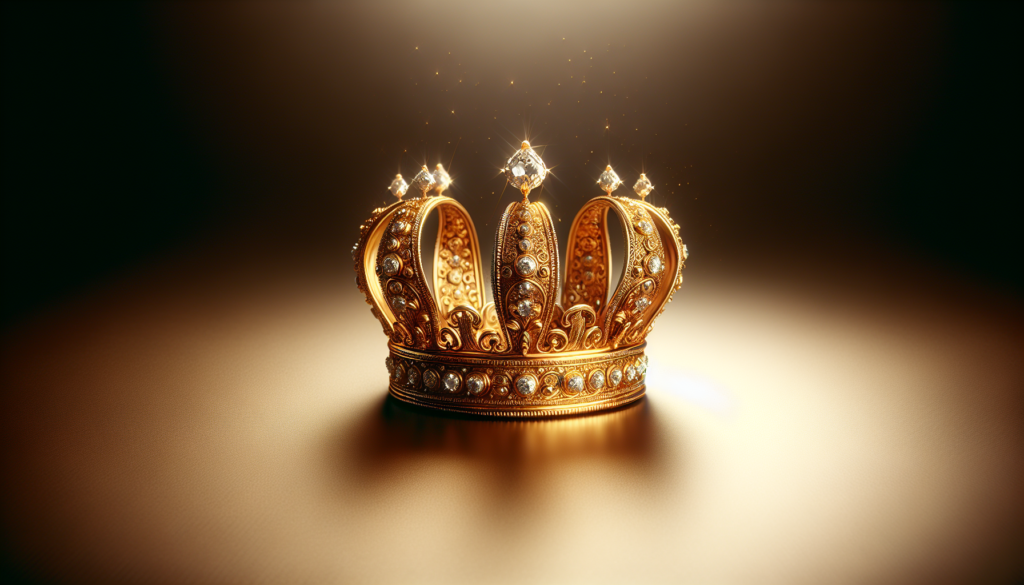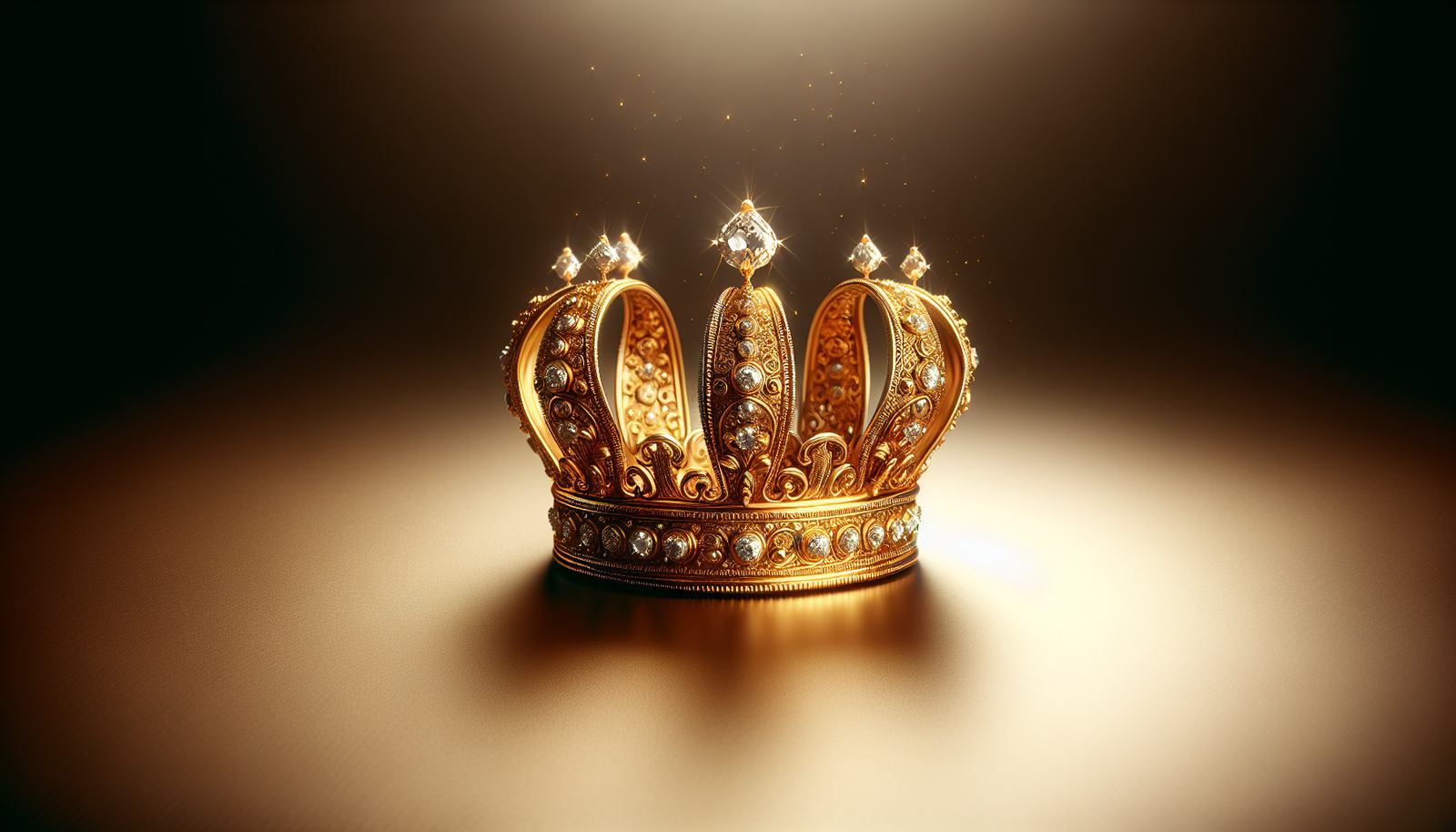You are about to embark on a fascinating journey exploring the profound cultural significance of gold. This precious metal has long captivated human civilizations across the globe, transcending time and borders. From ancient Egypt’s pharaohs to the extravagant jewelry worn by modern royalty, gold has symbolized wealth, power, and prestige throughout history. But it doesn’t stop there – this article will unveil the lesser-known role gold plays in religious rituals, artistic expression, and even as a symbol of love. So, buckle up as we delve into the enchanting world of gold and unravel its cultural tapestry.
Historical Significance
Gold has played a significant role in the history of civilizations around the world. From ancient times to the present day, this precious metal has captivated humanity with its brilliance and allure. The use of gold can be traced back to ancient civilizations, where it held immense value and served various purposes.
Ancient Civilizations and Gold
In ancient civilizations such as Egypt, Mesopotamia, and Greece, gold held great cultural and religious significance. It was considered a symbol of power, wealth, and divinity. The intricate gold jewelry worn by the pharaohs of Egypt showcased their high status and divine connection. The ancient Greeks also revered gold and associated it with their gods and goddesses.
Gold in Medieval Europe
During the medieval period in Europe, gold played a crucial role in the intricately designed religious artifacts and ornate architecture. Cathedrals and churches were adorned with gold decorations, showcasing the opulence of the church and its divine connection. It was believed that the use of gold in religious artifacts would bring blessings and divine favor.
Gold in Asian Cultures
Asian cultures, such as those in India and China, have long regarded gold as a symbol of prosperity and good fortune. In India, gold has deep religious and cultural significance. It is often seen as a symbol of purity and is used in traditional ceremonies, weddings, and festivals. Similarly, in China, gold is associated with wealth and prosperity, and it is customary to gift gold jewelry during special occasions.
Religious Significance
Gold holds immense religious significance in various religions around the world. It has been revered as a sacred metal and is often used in religious rituals and artifacts.
Gold in Christianity
In Christianity, gold symbolizes the divine and is associated with the glory of God. The use of gold in religious art, such as golden crosses and religious statues, reflects the sacredness and holiness of the faith. The use of gold in Christian liturgy and ceremonies represents purity and enlightenment.
Gold in Hinduism
Hinduism, one of the oldest religions in the world, has a deep reverence for gold. Gold is considered a symbol of purity and is associated with the Hindu goddess of wealth, Lakshmi. Gold jewelry is extensively worn during Hindu weddings and festivals as a symbol of prosperity and divine blessings.
Gold in Buddhism
Buddhism also recognizes the significance of gold in its teachings. Gold is regarded as a symbol of enlightenment and is often used in the decoration of Buddhist temples and statues. The use of gold in Buddhist art reflects the spiritual qualities of the faith and represents the ultimate goal of achieving enlightenment.

Symbolism
Gold carries powerful symbolism that transcends cultures and time. It represents various concepts that hold immense value in human society.
Wealth and Prosperity
Gold has long been associated with wealth and prosperity. In many cultures, possessing gold is considered a sign of financial success and abundance. It symbolizes good fortune and the ability to achieve one’s desires. The desire for wealth and prosperity has shaped human endeavors throughout history, making gold a universally cherished symbol.
Power and Royalty
Gold has been closely linked to power and royalty for centuries. Kings, queens, and emperors adorned themselves with gold to showcase their authority and high social standing. The golden crowns, scepters, and jewelry worn by royalty symbolized their divine right to rule and their superiority over their subjects.
Purity and Divinity
Gold’s radiant brilliance and incorruptibility have made it a symbol of purity and divinity across cultures. Its lustrous appearance represents the purity of the soul and the divine nature of the gods and goddesses. In religious art and ceremonies, gold is often used to capture the divine essence and create a sense of awe and reverence.
Artistic and Decorative Uses
Gold has been an integral part of artistic and decorative expressions throughout history. Its beauty and versatility have inspired artists and craftsmen to incorporate gold into various art forms.
Gold in Jewelry
Gold has been used in the creation of exquisite jewelry since ancient times. From elaborate necklaces and bracelets to delicate earrings and rings, gold jewelry has always been highly prized. Its majestic appearance and durability make it the perfect metal for crafting timeless pieces that symbolize love, beauty, and elegance.
Gold in Architecture
Gold has been used in architectural design to create awe-inspiring structures that stand as testaments to human ingenuity. The use of gold leaf in the gilding of domes, spires, and intricate carvings adds a touch of opulence and grandeur to buildings. It elevates the visual experience and leaves a lasting impression on those who witness these architectural marvels.
Gold in Paintings and Sculptures
Artists have used gold as a medium to add richness and depth to their creations. The use of gold leaf or gilt in paintings and sculptures creates a luminous effect, enhancing the beauty and symbolism of the artwork. Gold accents highlight the most important elements, making them stand out and giving the artwork a sense of timelessness and prestige.

Economic Importance
Gold holds great economic significance, as it is widely regarded as a valuable asset and a means of preserving wealth.
Gold as a Store of Value
Gold has traditionally been used as a store of value and a hedge against inflation. Unlike paper currency, gold retains its worth over time and can provide stability in times of economic uncertainty. It is seen as a safe haven investment, and many investors consider holding gold as a form of insurance against economic downturns.
Gold in Global Trade
Gold has played a crucial role in global trade throughout history. It has served as a medium of exchange and a measure of wealth. The gold standard, where the value of currencies was pegged to gold, was widely adopted until the early 20th century. Even though the gold standard is no longer in use, gold still holds value in international trade and serves as a form of currency reserve for many nations.
Gold Demand and Supply
The demand for gold remains high in various sectors, including jewelry, electronics, and investment. As a result, gold mining and extraction have become significant industries worldwide. The supply of gold is limited, making it a precious resource that requires careful management to ensure its availability for future generations.
Gold Rushes and Migration
Throughout history, gold rushes have sparked mass migrations and shaped the development of regions around the world.
California Gold Rush
The 1848 gold discovery in California led to one of the largest mass migrations in history. The promise of gold attracted thousands of prospectors from around the world, with hopes of striking it rich. The gold rush transformed California into a thriving state, contributing to its rapid population growth and economic development.
Australian Gold Rush
The Australian gold rush in the mid-19th century had a similar impact on the country’s development. The discovery of gold in Victoria attracted fortune seekers from all corners of the globe. The influx of migrants fueled economic growth and infrastructure development, shaping the future of Australia.
Impact on Indigenous Communities
While gold rushes brought wealth and growth to certain regions, they also had significant impacts on indigenous communities. Traditional lands were disrupted, and indigenous peoples often faced displacement and loss of livelihood. It is important to acknowledge and address the historical injustices inflicted upon indigenous communities during these gold rushes.
Gold in Modern Society
Gold continues to hold its allure in modern society, finding its place in various aspects of contemporary life.
Gold in Fashion and Design
Gold continues to be a symbol of luxury and prestige in the world of fashion and design. From gold-plated accessories to designer clothing with gold accents, the use of gold adds a touch of opulence and sophistication. Gold remains a sought-after component in the world of fashion, signifying exclusivity and style.
Gold in Electronics and Technology
Gold’s unique properties, such as its high conductivity and resistance to corrosion, make it an essential component in electronics and technology. It is used in the production of circuit boards, connectors, and other electronic components. Gold’s reliability and durability ensure the efficient functioning of electronic devices.
Gold as Investment
Investors continue to view gold as a reliable investment option. Its reputation as a store of value and a hedge against economic uncertainties make it an attractive choice for those looking to preserve their wealth. Gold investment can take various forms, including physical gold, exchange-traded funds (ETFs), and gold mining stocks.
Ethical Concerns
While gold’s cultural and economic significance cannot be denied, there are ethical concerns surrounding its extraction and trade.
Gold Mining and Environmental Impact
Gold mining can have severe environmental consequences, including deforestation, soil erosion, and the pollution of water sources. The extraction process often involves the use of toxic chemicals, such as cyanide, which can contaminate surrounding ecosystems. Sustainable mining practices and increased regulation are necessary to minimize the environmental impact of gold mining.
Fair Mining Practices
The issue of fair mining practices has come to the forefront in recent years. Fair mining practices prioritize worker rights, fair wages, and safe working conditions. Organizations and certifications, such as Fairtrade Gold and Responsible Jewellery Council, aim to ensure that the gold industry operates ethically and sustainably.
Conflict Gold
One of the most pressing ethical concerns surrounding gold is the issue of conflict gold, or gold sourced from regions experiencing armed conflict or human rights abuses. These practices contribute to the perpetuation of violence and exploitation. Efforts to trace and certify the origin of gold, along with international regulations, aim to mitigate the trade of conflict gold.
Gold in Literature and Folklore
Gold has captured the human imagination for centuries, leading to its inclusion in various literary works and folklore.
Mythical Stories and Legends
Gold often features prominently in mythical stories and legends. Whether it be the quest for the Golden Fleece in Greek mythology or tales of hidden treasures guarded by mythical creatures, gold represents the ultimate prize and the pursuit of fortune.
Fairy Tales and Folk Songs
Gold holds a special place in fairy tales and folk songs around the world. From Rumpelstiltskin’s demand for gold to the song “Cotton-Eyed Joe,” which speaks of gold as a symbol of love and celebration, these tales and songs reflect the enduring fascination with this precious metal.
Gold in Literature
Gold’s symbolism and cultural significance have also found their way into literature throughout the ages. Writers have used gold as a metaphor for wealth, power, and greed. From Shakespeare’s depiction of gold in “The Merchant of Venice” to F. Scott Fitzgerald’s portrayal of the American Dream in “The Great Gatsby,” gold continues to be a powerful literary symbol.
Gold in Sports and Entertainment
Gold holds a special place in sports and entertainment, where it represents achievement, recognition, and excellence.
Olympic Gold Medals
The highest honor in the Olympic Games is the gold medal. Athletes strive to win gold, which represents their exceptional skill, dedication, and triumph over their competitors. The golden laurel wreath placed atop the winner’s head symbolizes victory and the pursuit of excellence.
Golden Globe Awards
In the world of entertainment, the Golden Globe Awards recognize outstanding achievements in film and television. The golden statuette represents the pinnacle of success in the industry and is coveted by actors, actresses, and filmmakers worldwide. It symbolizes talent, artistry, and recognition from peers.
Golden Records in Music
The achievement of selling a million records and earning a “gold record” has long been a milestone in the music industry. It signifies commercial success and widespread popularity. Artists strive to attain this recognition, as it validates their talent, hard work, and ability to resonate with the masses.
Gold’s cultural significance is deeply intertwined with human history, religion, symbolism, and artistic expression. From ancient civilizations to modern society, gold continues to captivate and inspire, leaving an indelible mark on our collective consciousness. Its mesmerizing sheen, durability, and scarcity ensure that gold will maintain its cultural significance for generations to come.

